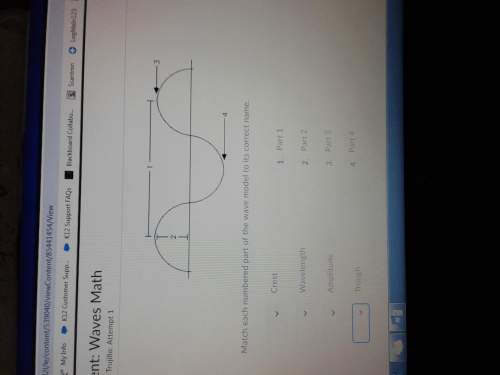
Physics, 13.09.2021 16:50 limelight11
1. Measure the mass of the ball. mball = 9.7g2. Measure the height from which you are going to drop the ball. h = 4.38m3. Drop the ball from the top of the stairs and measure the time for it to hit the floor. tdown = 0.89s4. Calculate the acceleration of free fall. a= 2h/(t_down^2 )= 12.2m/s^2 2(4.83m)/(0.89s)^25. Compare a from Step 3 to accepted = g = 9.8 m/s^2.% Error= |a - a_accepted |/〖a 〗_accepted ×100% = 24%6. Calculate the work done to carry the ball up the stairs. What should you use for d? 4.38mW=Fd=m_ball gd= 0.0097kg(9.8g)(4.38m) =0.47J7. Calculate the gravitational potential energy of the ball at the top of the stairs.〖PE〗_(gravitational, top)=m_ball gh=0.0097kg(9.8m/s^2)(4.38m)=0.74J8 . Calculate the kinetic energy of the ball at the top of the stairs at the moment it is released. What is the velocity of the ball the moment it is released? 0〖KE〗_top=1/2 m_ball v_top^2= 09. Calculate the total energy of the ball at the top of the stairs at the moment it is released.〖Energy〗_(total, top )=〖PE〗_(gravitational, top)+ 〖KE〗_top= 0.46J10. Calculate the gravitational potential energy of the ball when it reaches the floor. What is the height h when it reaches the floor? 0〖PE〗_(gravitational, bottom)=m_ball gh= 011. Using conservation of energy, what should be the kinetic energy of the ball the moment before the ball collides with the floor?〖Energy〗_(total, top )= 〖Energy〗_(total, bottom )=〖PE〗_(gravitational, bottom)+ 〖KE〗_bottomRearranging the equation:〖KE〗_bottom=〖Energy〗_(tota l, bottom )-〖PE〗_(gravitational, bottom)= 0.46J12. Calculate the velocity the moment before the ball collides with the floor using equations describing motion.〖v 〗_bottom= 2h/t_down = 10.85 m/s13. Calculate the experimental kinetic energy of the ball the moment before the ball collides with the floor using the velocity v bottom.〖KE〗_bottom=1/2 m_ball v_bottom^2= 0.57J14. Compare the two values of kinetic energy of the ball just before it collides with the floor. Since they are both experimental, use percent difference instead of percent error to compare the values of kinetic energy.% Difference= |〖KE〗_(Question 11)- 〖KE〗_(Question 13) |/(((〖KE〗_(Question 11)+〖KE〗_(Question 13) ))/2) ×100%= 21%Answer the following questions:1. In step 5, how does the experimental value of acceleration a compare the known value of g = 9.8 m/s? What are possible sources of error that cause the difference?2. How does the work calculated in Step 6 compare the potential energy of the ball at the top of the stairs in Step 7? Explain your answer.3. Why are we justified in saying the total energy of the ball as it is dropped from the top of the stairs is equal to the total energy of the ball just before it hits the floor? What are we neglecting?4. How do the two values of kinetic energy from Steps 11 and 13 compared to each other? What are sources of error that might explain any difference in these values?

Answers: 1


Another question on Physics

Physics, 22.06.2019 13:40
What is the thinnest soap film (excluding the case of zero thickness) that appears black when illuminated with light with a wavelength of 480 ? the index of refraction of the film is 1.34, and there is air on both sides of the film. express your answer in nanometers. hint 1. how to approach th
Answers: 1

Physics, 22.06.2019 14:00
Why is rain likely when warm, moisture-laden air meets cold air? a) the lighter warm air will rise and cool down, causing condensation and rain. b) the cold air moves faster and pushes the warm air away, causing condensation and rain. c) the moisture in the warm air condenses on contact with the cold air, causing rain to fall. d) the cold air mixes with the warm air, reducing its temperature causing moisture to condense.
Answers: 1

Physics, 22.06.2019 16:40
An owl dives toward the ground with a constant velocity of 4.40 m/s at 53.0° below the horizontal. the sun is directly overhead and casts a shadow of the owl directly below it. what is the speed (in m/s) of its shadow on level ground?
Answers: 3

Physics, 22.06.2019 18:50
What accounts for an increase in the temperature of a gas that is kept at constant volume? a. energy has been removed as heat from the gas. b. energy has been added as heat to the gas. c. energy has been removed as work done by the gas. d. energy has been added as work done by the gas.
Answers: 2
You know the right answer?
1. Measure the mass of the ball. mball = 9.7g2. Measure the height from which you are going to drop...
Questions

Mathematics, 13.12.2021 21:40


Business, 13.12.2021 21:40


SAT, 13.12.2021 21:40


Computers and Technology, 13.12.2021 21:40

History, 13.12.2021 21:40


Mathematics, 13.12.2021 21:40




Mathematics, 13.12.2021 21:40


Mathematics, 13.12.2021 21:40







